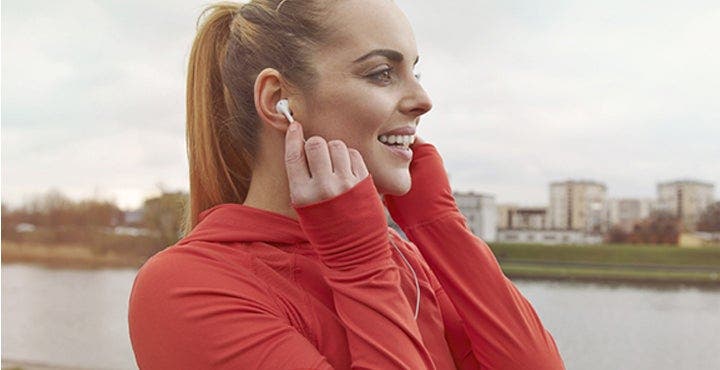How to go from workout to work!
By WeightWatchers
Published 4 April, 2016


Ever wondered how some people manage to fit exercise in before work, and look calm and ready to go at 9am? Set that early alarm, arm your body with a healthy breakfast and read our tips for runners, walkers and cyclists.
If you’re a runner…
- Rachael Woolston from fitbitchbootcamp.com suggests you map your route to avoid any hesitation on your journey. Try the route planner on mapmyrun.com to follow someone else’s run or to plot your own.
- Run well. Get the right trainers to suit your gait – with the wrong ones, you could end up injured. Specialist stores will assess your running style and advise you on the right shoes.
- Pack smart. You’ll have to pack your work outfit, so invest in a good bag that won’t bounce around when you run. Try Original Mountain Marathon (theomm.com) for lightweight bags. Put the heaviest things at the bottom so your lower back supports it.
- Stay on top. Treat yourself to a running top that’s light but will keep you warm and dry (try a microfibre running jacket by a brand such as Nike).
- Lighten up. Get travel sizes of toiletries and a small towel to keep weight down. Don’t carry your whole bathroom cabinet!
If you’re a city walker…
- Fitness expert Joanna Hall advises that as each foot strikes the ground, be aware of walking through the heel and the arch of the foot, and pushing off the toes.
- Stabilise your hips. A swing in your step may look sexy, but it does nothing for your spine or the firmness of your bottom. Stabilise your hips by imagining that you have a glass of champagne on each of them and that you have to keep the glasses full as you walk.
- Walk tall. Combat rounded shoulders by lifting your neck to create as much distance as possible between your shoulders and your ear lobes.
- Appreciate your arms. Your walking speed comes from your arms - try swinging them faster and your legs will automatically move more quickly.
- Wear the right gear. Try Vivo Barefoot shoes (vivobarefoot.com/uk), which help support your feet. A gilet allows you to move your arms and a cap will keep out drizzle when it’s wet.
If you’re a cyclist…
- Just get started. You don’t need a fancy bike. Use what you have; you can upgrade later.
- Invest in a good base layer. Go for breathable fabrics such as merino wool.
- Get the accessories right. A scarf will keep your neck warm, protect your hair from wind and combat hat hair when worn under a helmet. Arm warmers will add warmth and double up as gloves.
- Keep dry. If it’s raining, consider wearing thick tights or leggings and a dress rather than jeans or trousers, as you’ll find they dry far more quickly.
- Stay visible. Wearing bright clothing will make you more visible, a cycle bell is good for warning pedestrians, and LED bike lights are inexpensive and very useful.
- Be safe. Just a few hours of cycle training is invaluable. Check out cycletraining.co.uk for an instructor near you.
